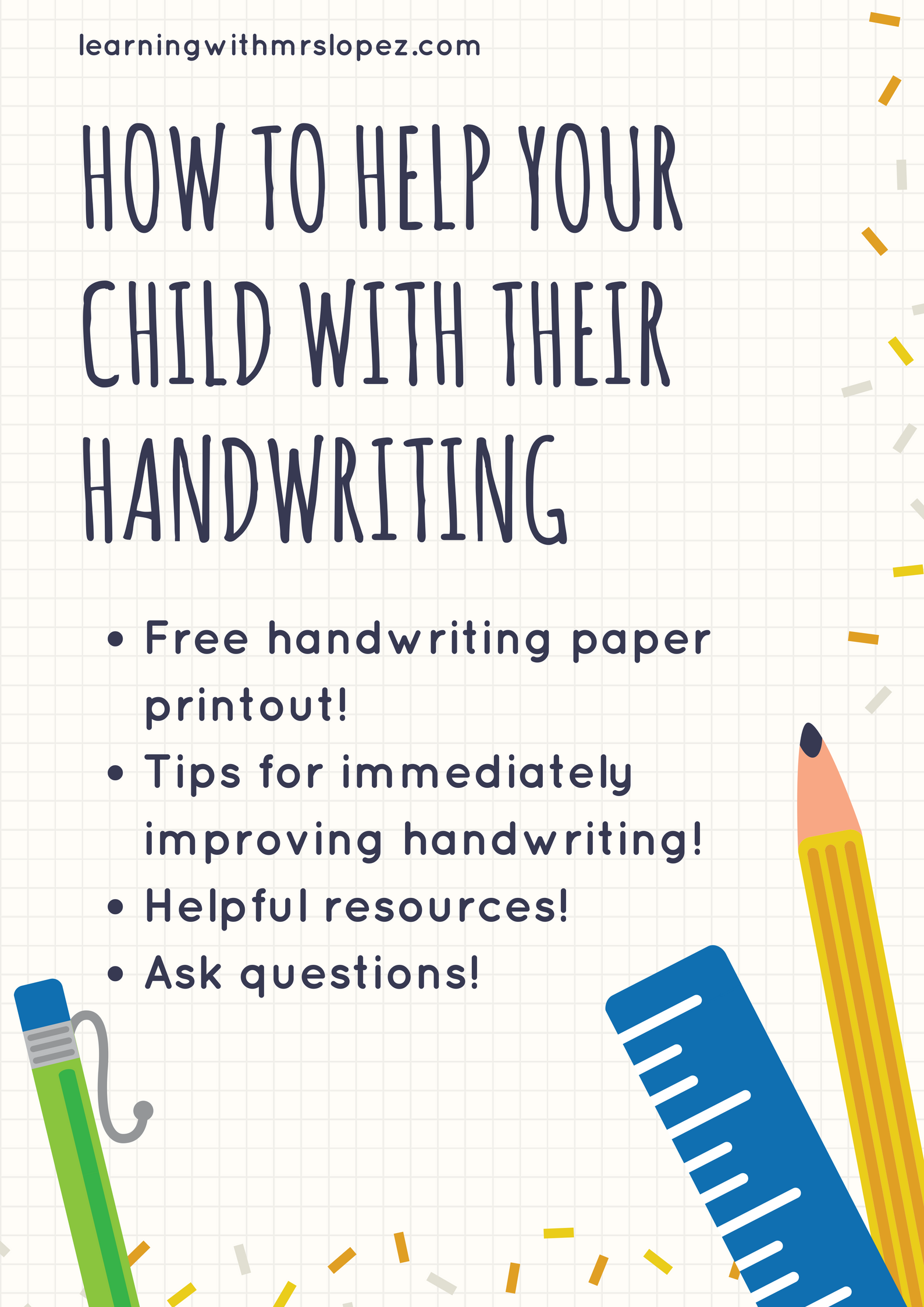How to Help Your Child with Their Handwriting
**This post contains affiliate links**
I currently work in a kindergarten classroom, so I know that handwriting takes time and patience to develop. Some kids magically have excellent handwriting and some kids need a little bit more help. Handwriting, even in the ‘everything on the computer’ age we live in,’ is important and shouldn’t be overlooked. Here are a few ways to help your child develop this crucial skill.
Emphasize the importance of good handwriting
I tutor a few students who have been on a long journey in perfecting their letter formation (i.e. handwriting). They always ask me “why is this important Mrs. Lopez? Does it really matter?” I always have the same response: You are writing to tell a very important message and taking your time and forming your letters well is how you get that message across to your teacher, your classmates, and all the other people who will read your work. I always try to validate a student’s hard work, emphasizing that they should make every effort to make their message heard.
You can emphasize the importance of good handwriting by posting your child’s work on the fridge, scanning and emailing the work to relatives, or showing off writing at get-togethers. If your child knows that he or she will be praised for how well they write (both in form and content), he or she will rise to the occasion. Guaranteed.
Slow down!
Sometimes, bad handwriting is the result of rushing to get work done. If that’s the case, make it known to your child that if you see sloppy handwriting on work coming home you will make him or her sit down and write it again. This may seem harsh, but, like I said before, kids like being praised for good work and being held accountable at home for the work being done at school can really make them step it up in the classroom.
Re-writing can also be a helpful time to start editing a child’s work. You can always casually mention misspelled words and how to fix them or conventions of writing, like commas and periods.
Letter Formation
Some other details to pay attention to are how your child forms their letters. This is super important. Getting a handwriting book can be helpful, especially for younger kids who are just learning to write. Unfortunately, a lot of times the formation of a letter is taught just once in school. Some kids need more focused repetition to get it right. This can show through as kids get older. When shopping for a handwriting book I like to look for whether there are step by step instructions with arrows on how to form the letters. The practice book must also have instructions and room for practice for both the upper and lower case of the letter.
There are also A LOT of free handwriting practice worksheets already out there. This may be the better option simply because you can print multiples of each letter’s worksheet. So, if your child needs extra help with f, you can print multiple pages to practice the letter f. I like to give students one set of handwriting worksheets in the beginning of the year and then review with a different set, just to keep things interesting.

Here are a few links to FREE handwriting practice:
Handwriting printout for younger kids and a handwriting review from Tot Schooling.
Free A to Z handwriting practice from The Moffat Girls .
You may also want to invest in some letter formation flashcards or a letter formation poster. Then, you can use these as a reference for when your child is writing or you can have your child trace the letters with the proper formation before he or she writes.
(I love the foam on the last product, so will your child.)
Spaces between words
Sometimes, writing can seem illegible because students are not placing adequate spaces between words. In my classroom I tell students to put their finger between words, but this can sometimes be awkward for them. I have also used popsicle sticks, called space men, to help students measure how much space there should be between words. As students gain more experience writing, these crutches will no longer be necessary.
The right paper
You may remember that your kindergartner (or former kindergartner) wrote on paper that was wider ruled. These lines had an upper line, a lower line, and a dotted line in the middle. This is important because these lines guided where certain parts of a letter were placed and where certain parts ended or began. I’ve included in this post a free print out of lined paper you can use to help your child have amazing handwriting.
The first page of the printout has a space where younger students can draw. If you have an older student who isn’t into drawing, just print out the 2nd page.
If you have anymore questions about handwriting feel free to email me via the email address listed at the top of this page.
Happy writing!

I will definitely be using these, my 8yo has really bad handwriting but we are working on it!
Glad the resources will help! 🙂
I have a kindergartner at home and we are working on handwriting. Kids don’t realize just how important good penmanship is. I’ve been encouraged to improve my own.
Awesome! Hope my tips helps you.
These are great tips for kids but also for me, hahah! My handwriting is so sloppy, I know I need to slow down. 😀
Oh haha! Glad the tips were helpful 🙂
Thank you for these tips. We are homeschoolers so I will use these with my boys.
Awesome! 🙂
This is so helpful. My little guy gets so frustrated.
Oh no 🙁 Well hopefully I have given you some advice that will help.